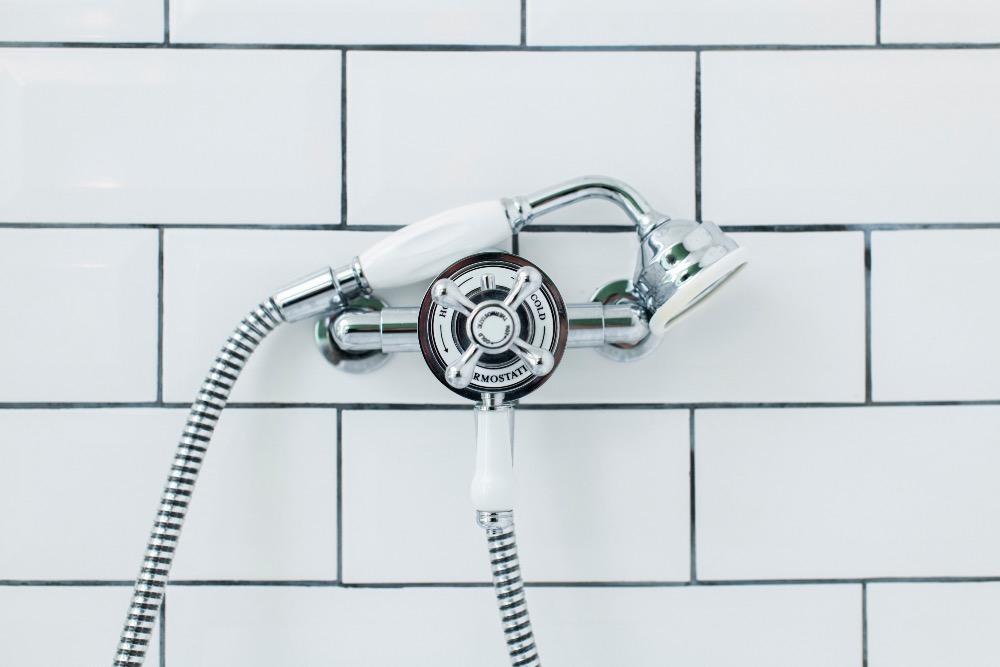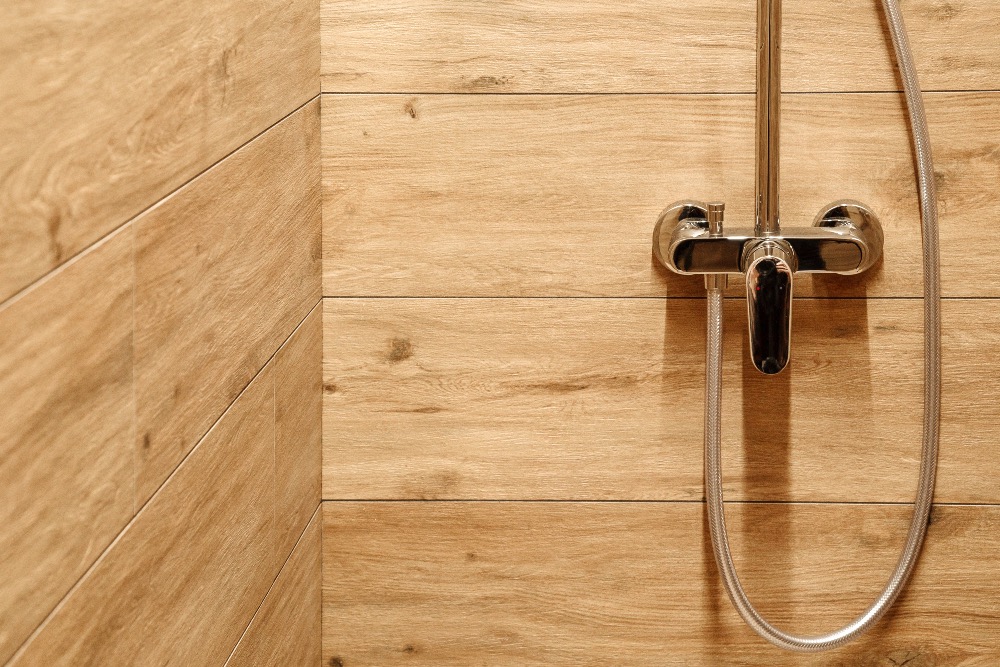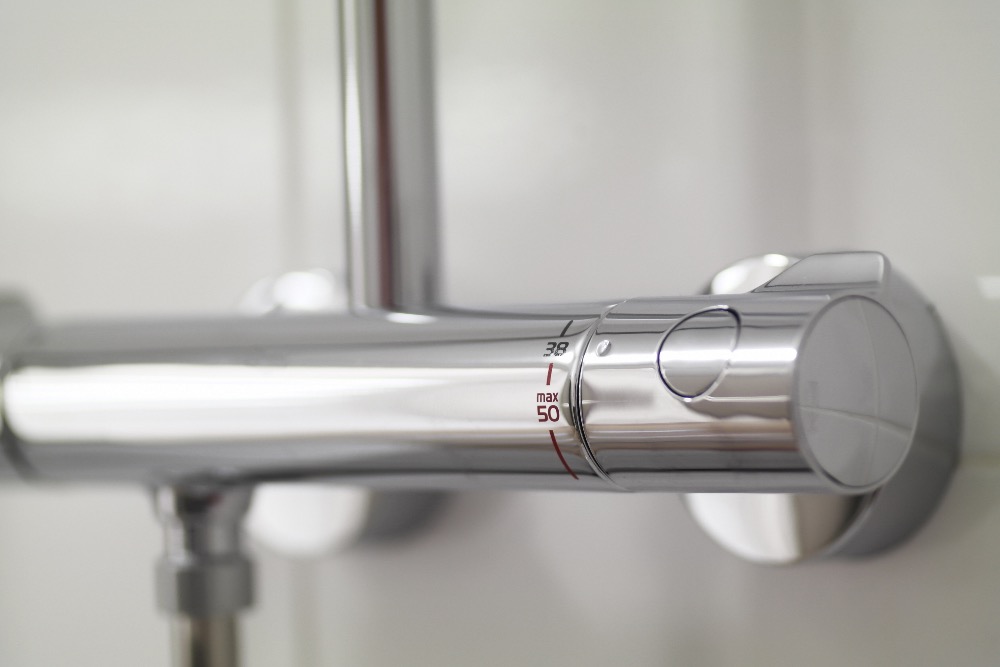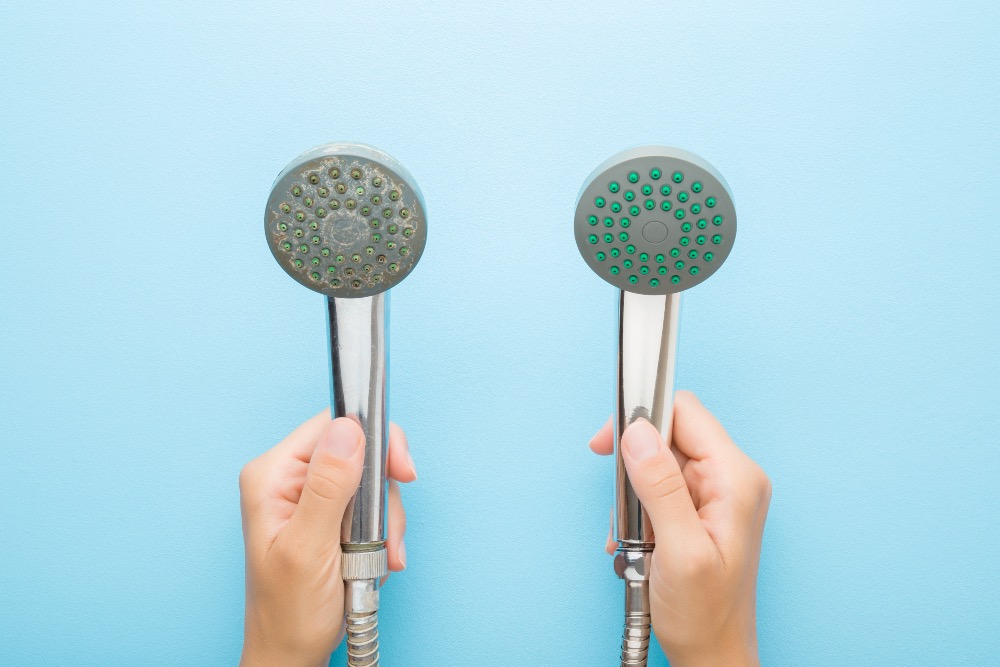Mixer showers are a staple in many modern bathrooms, offering a streamlined and pleasurable showering experience. But have you ever wondered how they work? You're not alone.
What Is a Mixer Shower

A mixer shower blends hot and cold water supplies to deliver water at your desired temperature. Unlike electric showers, which heat water on demand, mixer showers use your home's existing hot and cold water supply to blend a warm water shower.
They come in various designs, including exposed and concealed models, to suit your bathroom's aesthetic. You can also get manual and thermostatic mixer showers.
How Does A Mixer Shower Work?
The basis of a mixer shower is to, as the name suggests, mix hot and cold water to deliver the desired temperature to you. This gives you better and easier control than adjusting two separate taps. However, this mechanism relies on two bits working well in tandem; the water pressure and the mixer valve.
The Mixer Valve
At the heart of a mixer shower is the mixer valve. This component mixes the hot and cold water to achieve the your desired temperature. This valve can be either manual or thermostatic.
The Water Pressure
In order to mix the hot and cold water correctly, the valve relies on a balanced water supply. This means that the hot and cold water supply should to be at the same pressure, but at the very least, a consistent pressure.
If the incoming water pressure changes, then the position you set the valve at will no longer be mixing the hot and cold at the same rate. This can lead to sudden freezing temperatures, or worse, scalding.
Manual vs. Thermostatic Mixer Showers
Manual Mixer Showers

Manual mixer valves are slightly different in that they require you to manually adjust the temperature. They are simple, but can be affected when other appliances or outlets are used in your home.
Thermostatic Mixer Showers

Thermostatic mixer valves have a special cartridge that allows them to maintain a constant temperature. They can also have other features like anti-scald mechanisms.
How Can I Improve My Mixer Shower?
Mixer showers are a great choice for most households, but they can still be subject to issues. There are certain factors that can influence how well they work. Below are some of the most frequent considerations to keep in mind:
Water Pressure
In order for a mixer shower functions correctly, it requires hot and cold water supplies to be fed into the system at an equal pressure. This can be challenging if other water appliances are being used at the same time as your shower, as this can vary the pressure of one or both feeds. In fact, low water pressure in general can impact the effectiveness of a mixer shower and make it challenging to reach your the desired temperature.
One of the easiest ways to solve this problem is to get a shower pump, but you have to find out which one you need. We talk about this in more detail in our article "Is It Worth Getting a Shower Pump?". Alternatively, you go straight to our shower pump buying guide for help on deciding which shower pump is right for you.
Basic Maintenance
The temperature control knob on a mixer shower plays a crucial role in determining its performance. If this is not calibrated correctly, it can result in the shower being either too hot or too cold, causing discomfort to those sensitive to extreme temperatures.
Additionally, the valve cartridge's performance may deteriorate over time, leading to a faulty shower valve. Fortunately cartridges are usually a straightforward to change, which effectively fixes this problem.
Water Hardness
The hardness of the water in your local area can impact the functionality of a mixer shower. If the water is hard, it can lead to the accumulation of limescale in the shower head and valves, which can obstruct the flow of water.

To avoid any problems, you can either use a water softener on your entire system or you can regularly clean the shower head and valves or replace the valve cartridges when necessary. This will help you keep on top of the build up of limescale and ensure that your shower operates smoothly.
Advantages and Disadvantages of Mixer Showers
Pros
Easy to install and operate,
Wide variety of designs,
Work really well with high-pressure systems.
Cons
You need both a hot and cold feed to install,
Performance is easily influenced by water pressure issues,
Low-pressure systems may require a shower pump from the outset.
Wrapping up
Mixer showers have become a very popular option for many households, offering a great performance, experience and style. Whether you opt for a manual or thermostatic valve, mixer showers allow you to easily customise your showering experience to your liking.
However, like any piece of technology, they come with their own set of challenges. Water pressure issues and maintenance can sometimes be a bit of a bother, but with the right knowledge and perhaps a shower pump, these issues are easily solvable.
So, the next time you step into a mixer shower, you'll not only enjoy the warm water but also appreciate the intricacies that make your pleasurable shower possible. From the mixer valves to water flow, and even the nitty-gritty of water hardness, you're now well-equipped to make the most out of your mixer shower experience.
Whether you're considering installing a new mixer shower or simply curious about how your existing one works, we hope this guide has shed some light on the world of mixer showers.
Frequently asked questions
What is a mixer shower?
A mixer shower blends hot and cold water supplies to deliver water at your desired temperature. Unlike electric showers, which heat water on demand, mixer showers use your home's existing hot and cold water supply.
How does a mixer shower work?
A mixer shower works by blending hot and cold water through a mixer valve to achieve the desired temperature. The valve can be either manual or thermostatic.
What is the difference between manual and thermostatic mixer valves?
Manual mixer valves require you to manually adjust the temperature and can be affected by other water usage in the house. Thermostatic mixer valves maintain a constant temperature and often have safety features like anti-scald mechanisms.
How can I improve my mixer shower's performance?
You can improve your mixer shower's performance by ensuring balanced water pressure, calibrating the temperature control knob, and performing regular maintenance like cleaning or replacing valve cartridges.
What are the advantages of mixer showers?
Mixer showers are easy to install and operate, come in a wide variety of designs, and work well with high-pressure systems.
What are the disadvantages of mixer showers?
Mixer showers require both a hot and cold feed to install, their performance can be influenced by water pressure issues, and low-pressure systems may require a shower pump from the outset.
How does water hardness affect a mixer shower?
Water hardness can lead to the accumulation of limescale in the shower head and valves, which can obstruct the flow of water.
What can I do if I have a mixer shower with low water pressure?
If you have low water pressure, one of the easiest ways to solve this problem is to get a shower pump. Make sure to find out which type of pump you need for your specific situation.
Why is temperature control important in a mixer shower?
Temperature control is crucial for the performance of a mixer shower. If not calibrated correctly, it can result in the shower being either too hot or too cold, causing discomfort.
Any more questions?
If you have any queries or questions about the products we sell, or even your next project, give us a shout! We'll try our best to give you a hand.